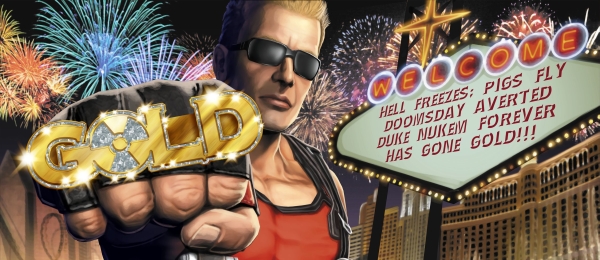
In his introduction to Blood, Sweat, and Pixels: The Triumphant, Turbulent Stories Behind How Video Games Are Made, Jason Schreier wrote that a game developer once told him it’s a miracle when a team manages to complete a game. Over the next 300 pages, developers from Blizzard, Bungie, and Naughty Dog reinforce this point again and again. Using brutal honesty, they all discuss how close they came to disaster.
But not every team is so lucky (including the members of LucasArts that Schreier interviewed for his last chapter), and the development cycle for even the most well-funded games can often turn into a comedy of errors.
 Insert Quarter is a glimpse into gaming’s past, present, and future through an exploration of historical, retrospective, and contemporary reporting.
Insert Quarter is a glimpse into gaming’s past, present, and future through an exploration of historical, retrospective, and contemporary reporting.
As the first console to feature high definition graphics, and with a 12-month head start on Sony’s PS3 and Nintendo’s Wii, the Xbox 360 was poised to revolutionize gaming in 2005. But first, it needed games, and EA Sports’s Madden NFL 06 was high on the list.
Looking back at the game’s development for Glixel, Matt Paprocki discovered that the team at EA Tiburon wasn’t ready for the extra processing power available in Microsoft’s console, and an influx of animators from Disney lead to even more of an emphasis on unrealistic visuals (and Penny Arcade’s coining of “Bullshot” to refer to the game’s marketing materials):
With competition from NFL 2K killed off thanks to an exclusivity deal with the NFL, EA Sports’ Madden series was ready to enter a new HD era on a new next-gen console – the Xbox 360. Longtime Madden development studio Tiburon began work on Madden NFL 06 with plenty of big ideas meant to push the series forward on the new console. Instead, the studio produced one of the lowest rated entries in franchise history.
‘We’re Totally F–ked’: Inside The Making of ‘Madden NFL 06’
Interestingly, it was this same kind of Hollywood mentality that sunk one of gaming’s first film adaptations. Capcom was riding high after the launch of Street Fighter II, and they wanted to turn their colorful fighting franchise into a Hollywood blockbuster. But history, and Polygon‘s Chris Plante, will tell you that’s not how it happened:
In the early 1990s game-to-movie adaptations hadn’t yet earned their spot in the lower slots of the Culture Power Rankings — somewhere between Bret Michaels and the Buffalo Bills. Many rich, smart and well-connected men and women would have plucked out their agents’ eyeballs to have a credit appear before the words Street Fighter: The Movie. [Stephen de Souza], however, was grateful just to land the meeting.
Plus de Souza’s kids loved playing Street Fighter 2 in the Los Angeles arcades. The game’s special moves — gravity-defying kicks, jaw-crushing punches and flesh-scorching fireballs — echoed the fantastic visuals of his prior work. He had a real shot, he thought.
Street Fighter: The Movie – What Went Wrong
While most game projects aren’t going to have the same problems that Street Fighter: The Movie had, even the best developers can see their dream blow up in spectacular fashion. And that’s what infamously happened to 3D Realms.
After the release of Duke Nukem 3D in 1996, Game Director George Broussard wanted to create a sequel for the ages, but his desire to stay one step ahead of his competitors sent the development of Duke Nukem Forever spiraling out of control. Clive Thompson chronicled the saga behind the then-incomplete game for Wired in 2009:
On the last day, they gathered for a group photo. They were videogame programmers, artists, level builders, artificial-intelligence experts. Their team was — finally — giving up, declaring defeat, and disbanding. So they headed down to the lobby of their building in Garland, Texas, to smile for the camera. They arranged themselves on top of their logo: a 10-foot-wide nuclear-radiation sign, inlaid in the marble floor.
To videogame fans, that logo is instantly recognizable. It’s the insignia of Duke Nukem 3D, a computer game that revolutionized shoot-’em-up virtual violence in 1996. Featuring a swaggering, steroidal, wisecracking hero, Duke Nukem 3D became one of the top-selling videogames ever, making its creators very wealthy and leaving fans absolutely delirious for a sequel. The team quickly began work on that sequel, Duke Nukem Forever, and it became one of the most hotly anticipated games of all time.
Learn to Let Go: How Success Killed Duke Nukem
While Duke Nukem Forever would eventually be released to middling reviews in 2011, the team at THQ wouldn’t be so lucky. THQ was founded in 1989, and began developing video games in 1991. They would rise to become one of the biggest names in the world of game publishing over the next 20 years, but a string of bad decisions pushed the company to the brink of bankruptcy in 2012.
It all came crashing down a few weeks later, and Tracey Lien tried to figure out where it all went wrong in an investigative report for Polygon:
“There isn’t any one, isolated event that killed the company,” says a former THQ executive who asked to not be named. “This was one of the most successful video game businesses in America. We were a billion dollar company. It was complicated.”
THQ suffered a “death by a million spider bites,” the executive says.
The Fall of THQ
Most of THQ’s assets were purchased at auction by Deep Silver and Nordic Games in 2013, and the latter also picked up the trademark to the company name a year later, rebranding themselves as THQ Nordic in 2016. While not the same company it once was, the rejuvenated THQ Nordic even made an offer to acquire Deep Silver earlier this month.
I guess it’s always possible to get another “Continue” in the game industry…
